Introduction
There’s a gap in the Sony FE lens lineup that I find particularly irksome. There’s no AF 200mm f2.8. I don’t know when one will come either, because this is not a popular set of specifications. The lens makers think that you will buy a 2.8/70-200 zoom. But not only are they very expensive, they are very large and heavy. I would personally never carry one for the work I do, though of course many do, and many pros need to.
So what to do if that fast zoom is too heavy or expensive? I decided to have a look at a venerable and highly regarded Canon L series prime lens, the EF 2.8/200 L II. Adapted lenses work better than ever on the A7rIII, so it seemed like a good time to try it. Will it fill the gap, or should I be hoping for a Batis or Sony G?
A Few Samples
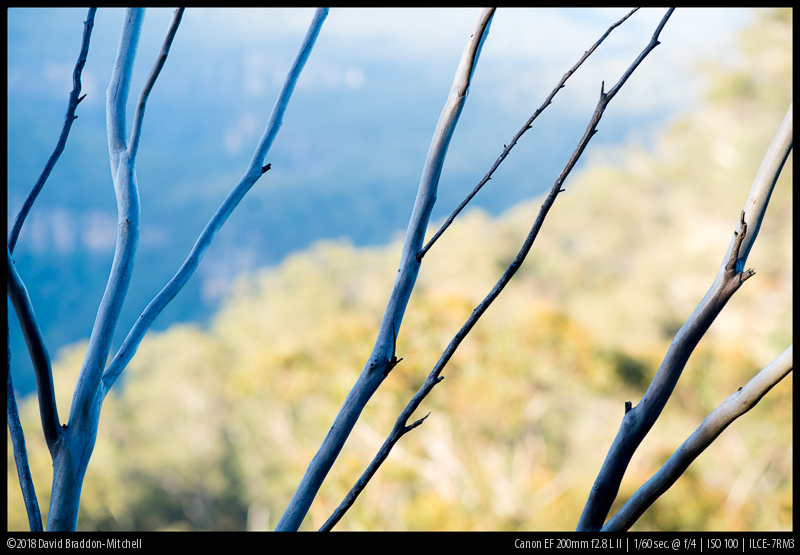
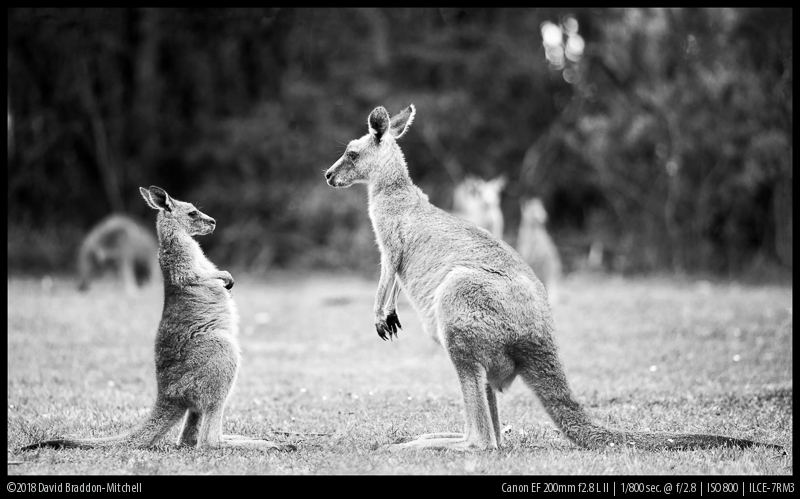
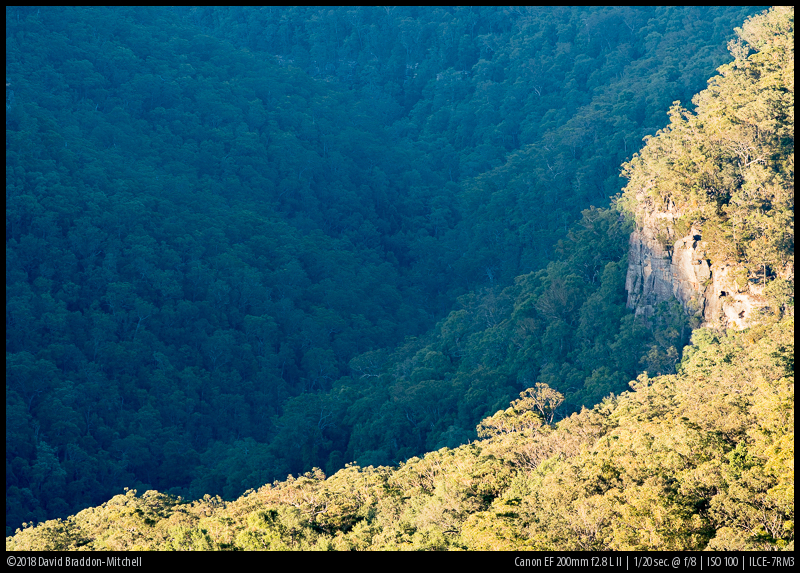
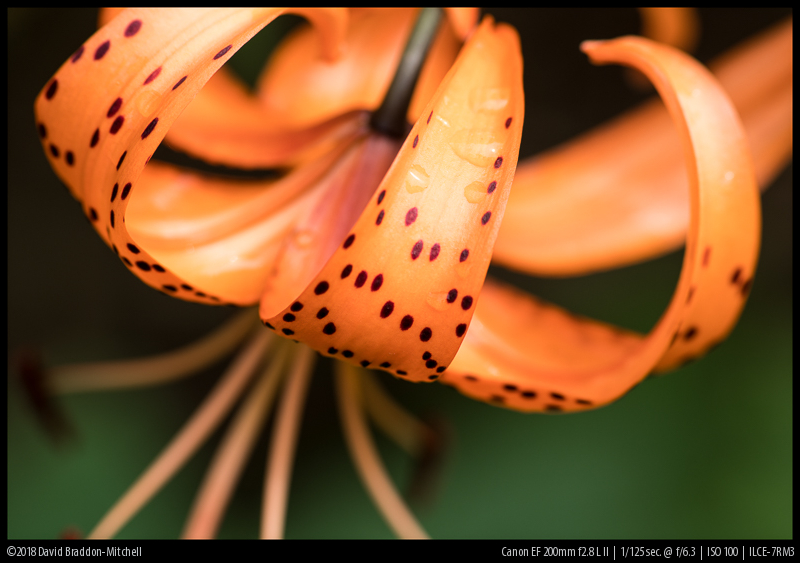

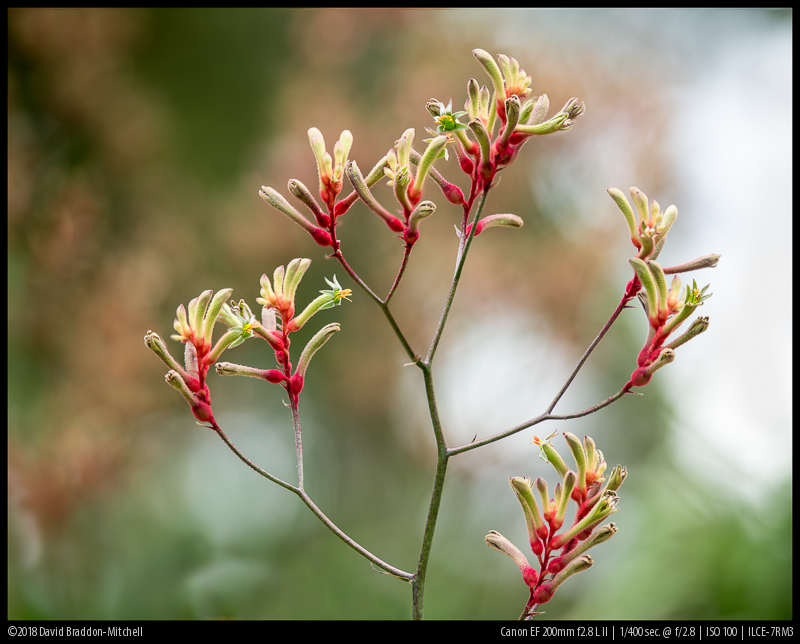

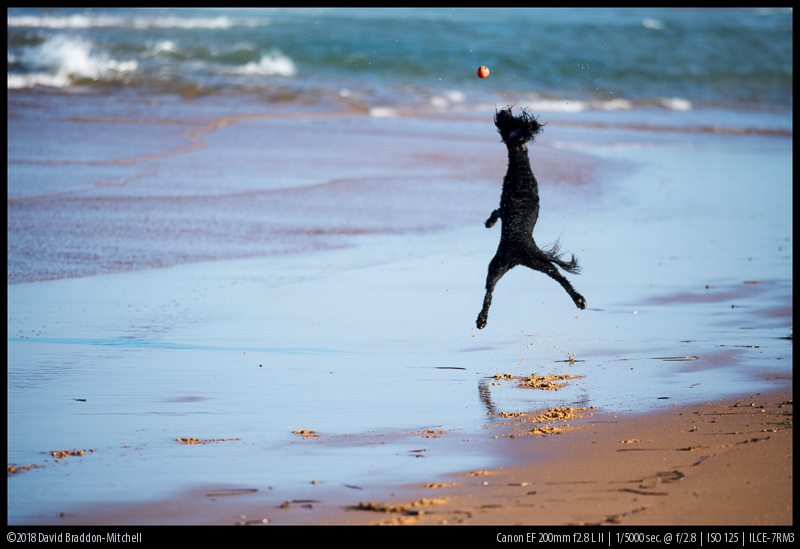
Most of the samples in this review are viewable in high resolution at my SmugMug site.
Specifications
| Max. Diameter | 83.2 mm |
| Length | 136.2 mm |
| Filter Thread | 72 mm |
| Weight | 756g without caps or hood |
| Max. Magnification | 0.16x |
| Close Focusing Distance from the sensor | 1.5m |
| Number of aperture blades | 8 |
| Elements/ Groups | 9/7, two UD |
The lens is still available new or you can get it used on eBay
- Buy it from from our affiliate link at B&H Photo Video
- You can also buy the Sigma MC-11 EOS-Sony adapter at B&H
- You can buy the lens from Amazon.com via this affiliate link.
- You can find and buy a used copy on eBay via this link
- Buying through our affiliate-links costs you no more, and makes a small contribution to running this blog.
Versions
Canon has made four 2.8/200 lenses. The first two were manual focus models. I have used the second of these, an internal focus FD model which was quite sharp and beautifully built but has very strong (horrendous might be fairer) LoCA. I had a copy for a while but gave up.
In 1991, after they had switched to the autofocus EF mount, Canon introduced the EF 200mm f/2.8L USM, now known as version I. This had two ED lenses to make it closer to apochromatic, as well as floating elements to improve the close and mid distance performance. In 1996 this was replaced with the version II. Not much changed optically, though the coatings are thought by some to have been upgraded. The autofocus motor is a bit better, and it has a detachable lens hood rather than a built in one. One the one hand this is a more effective hood; on the other hand the built in one was more convenient.
This review is of Version II. It’s also the one I would choose, because firstly it’ll be a bit newer, and second the AF motor is better. It’s also easy to get repaired because it is still in production. The used prices are not tremendously different.
Handling and Build
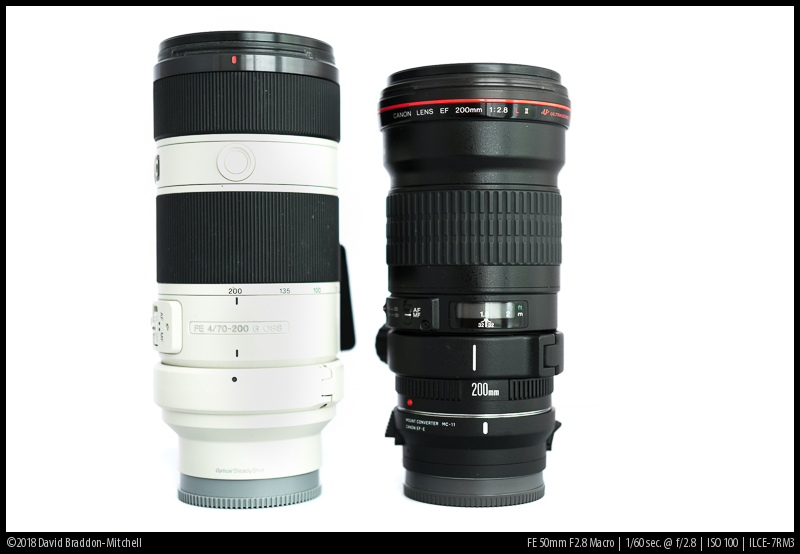
The lens handles very nicely. Here’s an image compared with Sony’s G F4 70-200. It’s not large or heavy: a tad smaller and lighter than the f4 zoom. The manual focus is directly coupled and responsive, though it does have a very short throw – roughly 110 degrees between 1.5 metres and infinity. On the Sigma MC-11 the switches work correctly, so you can switch between AF and manual on the lens, and also restrict the AF range. However the lens switch does not completely override any body button or menu setting on the camera the way it would on a native lens. If your body button/menu is turned to AF, you can use the lens switch to go between AF and MF. But if the body button/menu is set to MF, the lens switch is disabled and it will always stay in MF. The lens has no lens based stabilisation, but of course on the more recent Sony bodies you can use IBIS, and the MC-11 passes on the focal length automatically for that. A compact stabilised 2.8/200 is great in low light.
Canon make a tripod mount for it which my copy came with: the Mount Ring A(B). To focus closer you can of course either use EF tubes between the lens and adapter (if you have some) or Sony mount tubes between the camera and the adapter.
Infinity Resolution
I start with a comparison on the centre and extreme corner. For this comparison I have not included the midfield, as it is simply not distinguishable from the centre. As you can see the performance is very good wide open in the centre and good in the corner. It is excellent at f4, and by f5.6 it is beyond the point where differences are visible to the eye at 100%.
I have also departed from my practice of shooting and single image from which to extract crops at different points in the frame. Here I have selected the same infinity feature (about 1km away, which is not quite infinity but close) and shot one series with it in the centre, and another in the corner, which allows better comparison of the two. It does of course ignore the effects of field curvature, since the corners are refocussed, but I couldn’t find any in this lens.
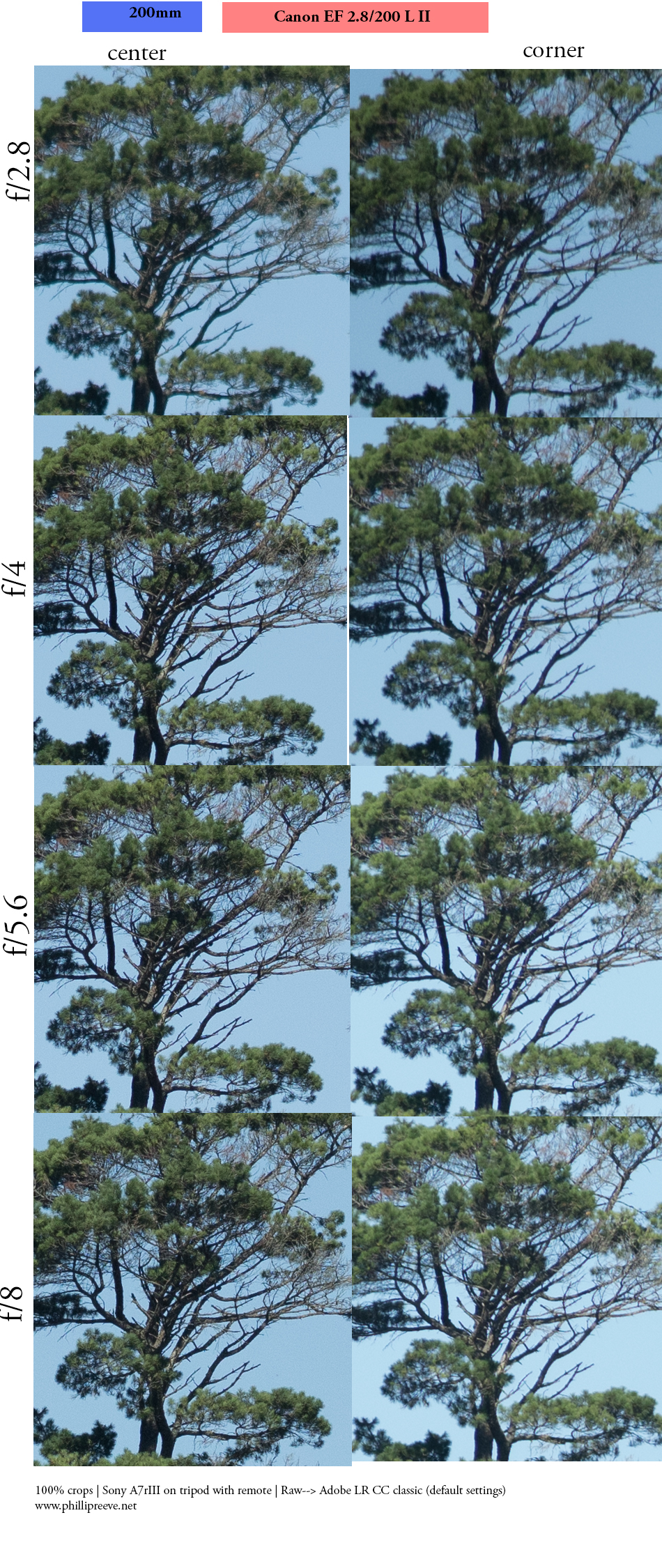
Comparison of corners with Sony FE 4.0/70-200G
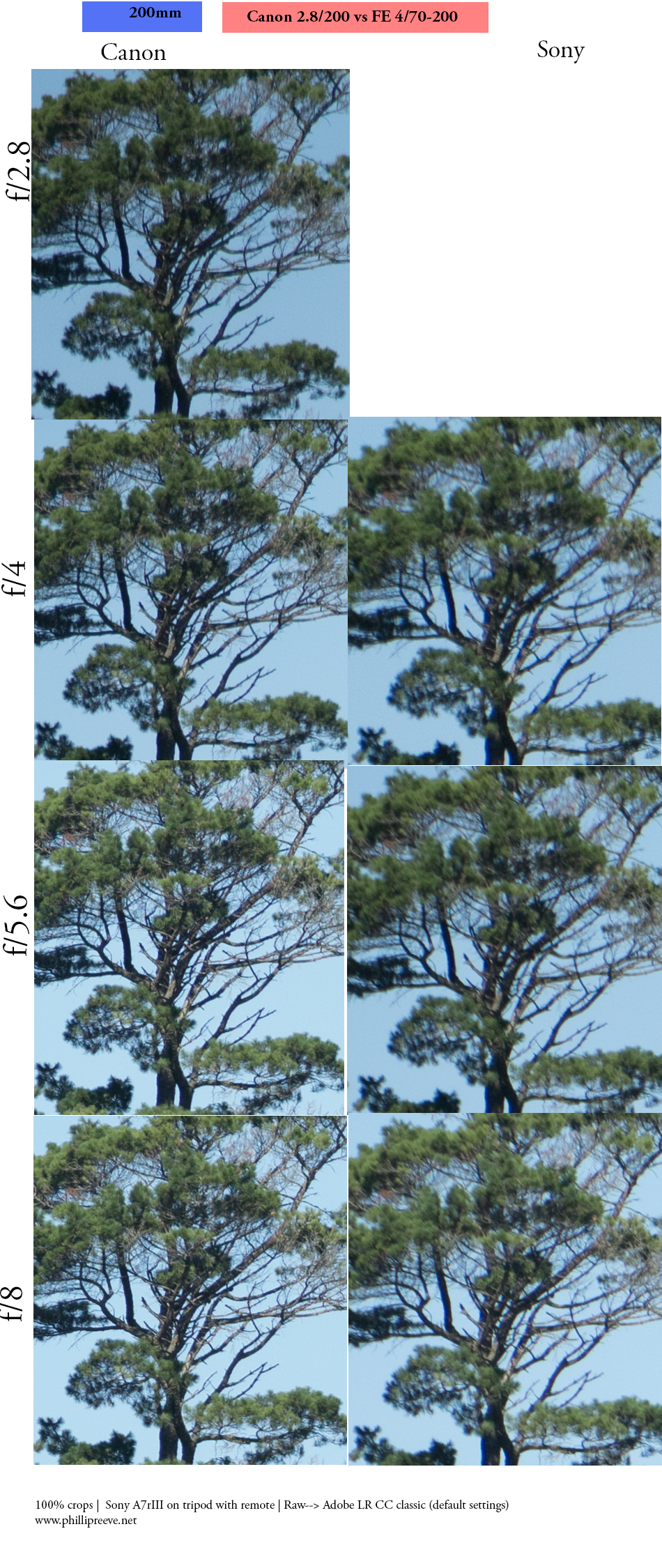
It’s pretty clear here that the Canon is the winner. While the Sony is quite good, the Canon is usefully better at every aperture. It’s way ahead at f4 and f5.6, and even noticeably ahead at f8. I’d say that the Canon at f2.8 is even a touch better than the Sony at f4.
Comparison of centre with Sony FE 4.0/70-200G
Now lets turn to the centre; again comparing the Canon and the Sony:

In the centre, to my slight surprise, the same pattern is repeated. The Canon is, wide open at f2.8, a hair better than the Sony at f4. At f4 and f5.6 the Canon is usefully better than the Sony (though the Sony is good). The Sony is very good by f8; but again the Canon is a touch better in a way that a landscaper might care about.
The Sony is a very good zoom. At around 135mm it’s really excellent, for example. But all zooms vary across their focal lengths, and this review is about what to use at 200. It’s clear to me that if you want 200mm images at infinity, the old Canon gives you a better result. The crops show you how much better; you may not care (this is 100% after all) and it won’t make any difference for web images or smaller prints. But there is a difference there.
Autofocus (with Sigma MC-11 adapter)
General autofocus is quite good, though you are limited to centre, wide, and variable spot AF. I found it worked fine with variable spot set to any of the three sizes. You are confined to the PDAF zone of the sensor, so you cannot move the AF points out as far as you can on a native lens.
Eye AF is also pretty good, though again you are limited to the inner 2/3 of the frame. This is sometimes quite restrictive, as I found I wanted to place the model’s eye just outside the zone where eye-AF would work, and in these cases I went to manual focus.
Tracking AF though is less good than I hoped. It seemed to always lag behind the subject when they are running towards you.
Look at this series of images: the focus is tracking, but lagging behind the subject, the lag getting slightly larger as they get closer to the camera.
Since writing this section, I have discovered that on many adapters on the A7rIII tracking is disengaged for any speed above 3fps – the lowest speed. These images were taken at 8 fps (Hi) – not the highest speed, but the highest which gives you smooth viewing of the moving subject.
The MC-11 does try to track at 8fps; but it’s possible that if the tracking speed is reduced to 3fps decent results with AF tracking might be possible. I will update this review when I get a chance to test this.
Bokeh
Assessing bokeh is one of the most difficult things in a review. Some people give you crops of bokeh balls and elements of the OOF structure, but this in my view does not always give you a good idea of what the overall image is like. You can give aperture series, as I will here. But of course the look will vary a lot depending on the structures in the background, and on the distance from sensor to subject, and subject to background.
So I will give bokeh assessments at different subject distances
This first series is focussed at about 8 metres. A tall person would fit into the short dimension of the frame. Focus is on the birch trunk. The subject is chosen to have background elements at very different distances. The pink hydrangea flowers are only half a metre behind the subject. The green (left) and red (right) vegetation is about three metres behind the subject. The leader above that is about ten metres behind, and the very top layer effectively at infinity.
Next is a bokeh series at about 2.7 metres; the distance for a fairly tight head and neck shot. Background 6m (lower half of frame) and 12m (upper part and right hand side) behind. Bokeh is completely smooth here, and noticeably more attractive than at f4 which is one of the reason for getting a lens of this sort.
Finally bokeh balls. Not having any aspherical elements (as is usual at this focal length even with modern lenses, the GM 2.8/70-200 is one of the few exceptions) there are no onion rings. The good news is that the lens is remarkably free of mechanical vignetting, and the balls stay fairly smooth as you stop down, though they do become octagonal in the case of pure point sources even one stop down.
Flare and Sunstars
The lens is pretty good for a 2.8/200 in respect of flare, but of course care has to be taken. Sunstars are not great, as you would expect for eight curved blades, but this is probably what we want in a 2.8/200 that is going to prioritize smooth bokeh over sunstars (perhaps there’s scope for a 5/200 landscape tele with ten straight blades – Olympus made a tiny 5/200 in the OM series, and that was ergonomically a landscapers dream).
So here is an image with the sun slightly off centre in the frame, and the shadows lifted +100 to expose artefacts. The artefacts aren’t too bad, and could be dealt with by editing. This is OK performance, and it’s even better with the sun in the centre.
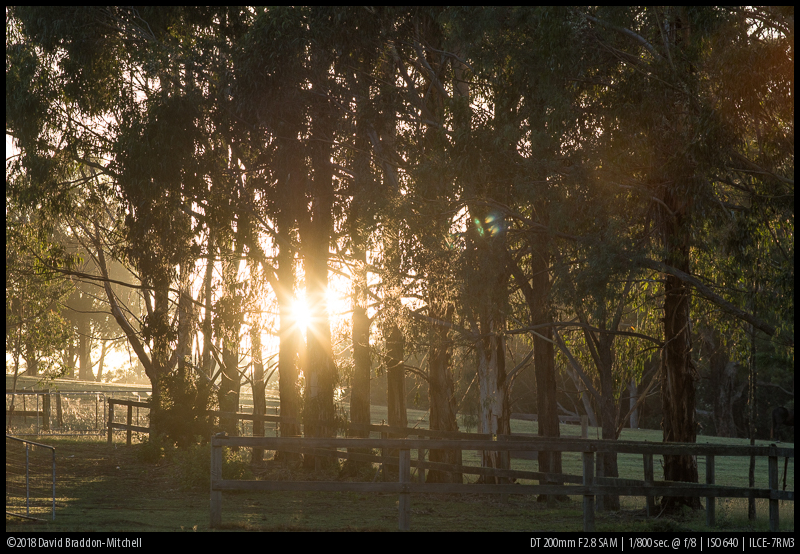
Placing the sun in the extreme corner of the image, however, is a good deal worse. Fortunately that’s not something that I have much urge to do compositionally.
The sun in the corner produces a blobby shapeless artefact in the opposite corner, and lowers overall contrast.
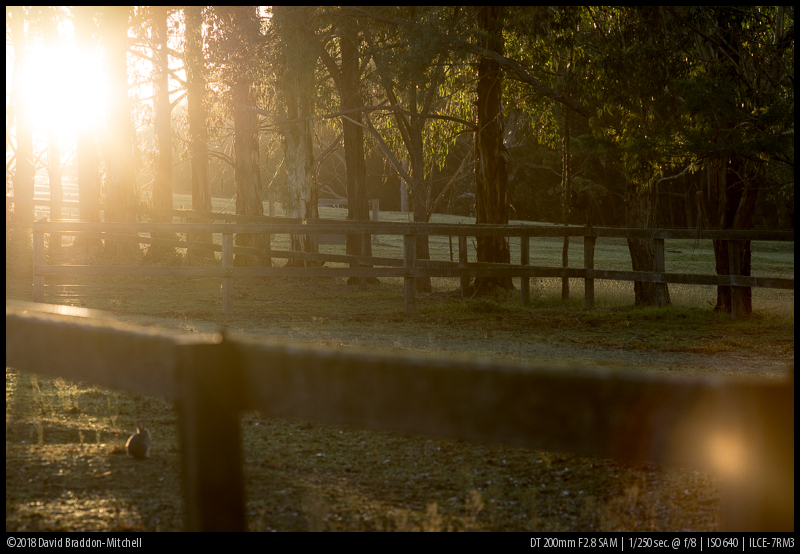
The sun just outside the frame creates significant veiling flare. The good news, though, is that not far outside the frame the lens hood completely fixes the issue, and if the sun is very close to the frame shading with your hand combines with the lens hood will deal with it just fine. Sometimes the veiling flare can be extreme with the sun a bit further out from the frame, and again shading can help, but it can be hard to do this while hand holding.
Chromatic Aberrations
There is some very mild lateral CA in the extreme corners, which cleans up listlessly and completely with the “remove CA” box ticked in Lightroom or equivalent. Are is the CA, and the cleaned up version:
LoCA is surprisingly well controlled for a fast lens of this vintage:
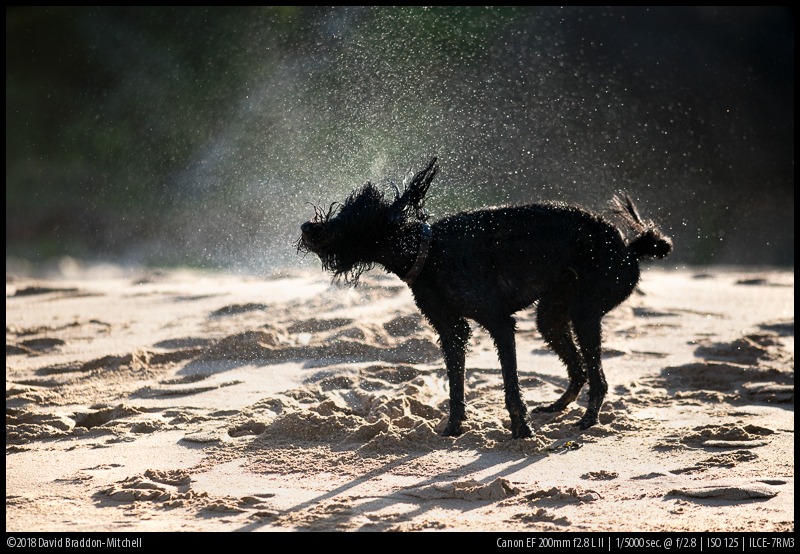
In this heavily backlit image Annie (wide open) is shaking water and sand both in front and behind the plane of focus. At the image level there is very little LoCA to be seen.
At life size we can see traces of green outlining and magenta cores that are the product of spherochromatism. But again this is mild for a lens of these specifications and vintage, and not enough to harm an image.
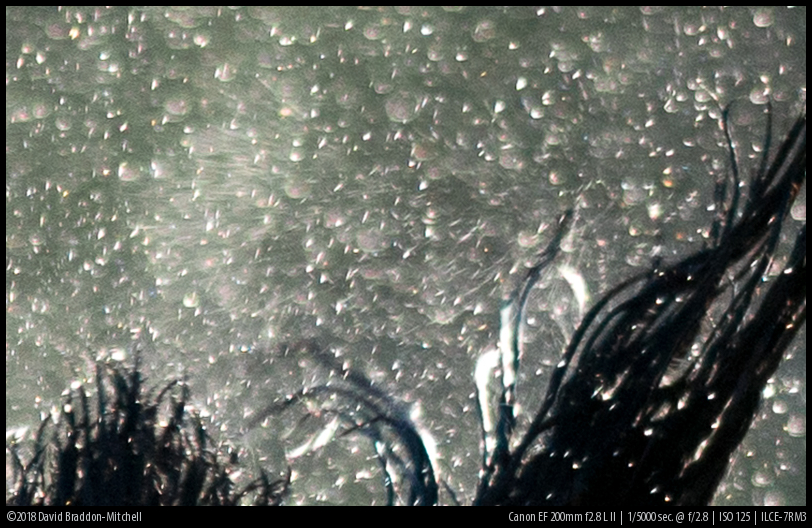
It cleans up a stop down.
All in all a very impressive performance. While not in the same class as the best contemporary APO lenses (the Batis 135 springs to mind) there are plenty of famous marques that have released lenses with an APO label than have worse CA performance than this.
Vignetting
Here’s an illustration of the vignetting performance:
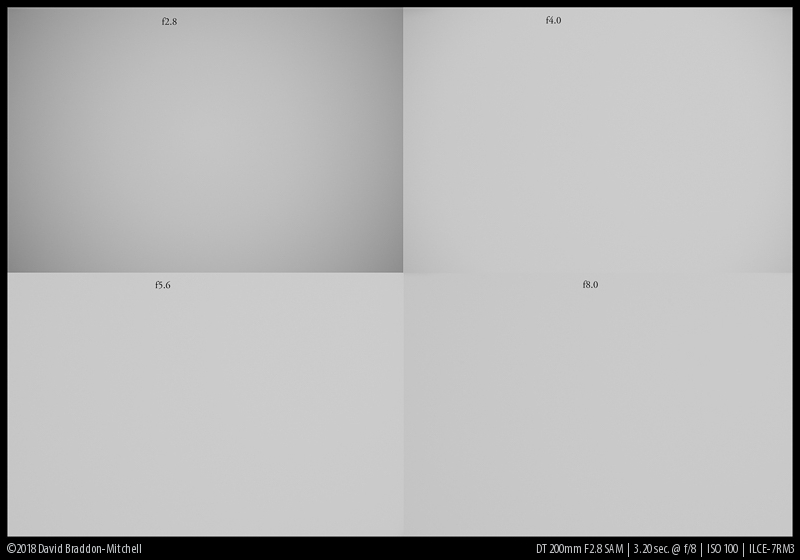
As you can see there is a certain amount at f2.8, mostly gone one stop down and completely gone (as far as one can tell by eye) at f4.
It’s easy to correct the vignetting (LR or Camera Raw has a profile for this lens, likely other software does too) but I never bother. For the purposes I use it wide open, a bit of vignetting is nice. Stopped down there is none to speak of.
Close Focus performance
Here’s an image to show what the magnification is like (.16x ) at the 1.5m close focus point:
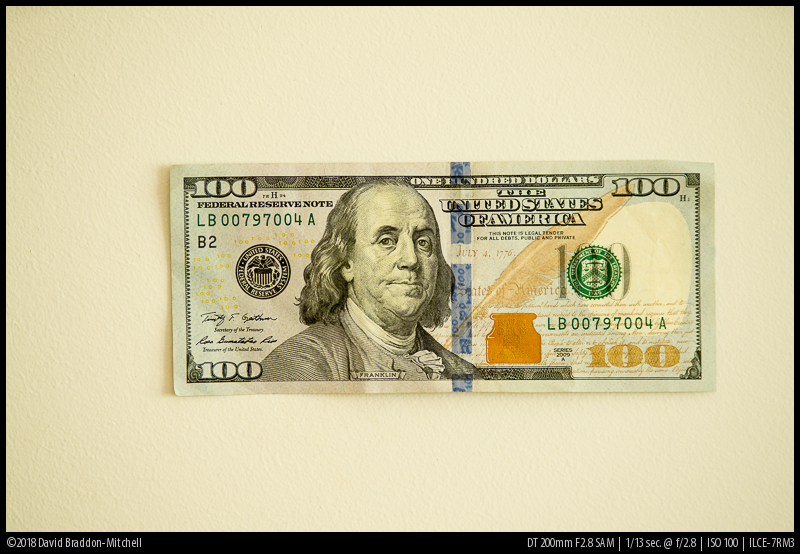
And here are 100% crops of the central area. Performance is quite even across the field, so there is plenty of flexibility about placement of the eyes of your portrait subject, for example.
Performance at MFD is quite decent, good performance at wide open, noticeable boost at f4 and impeccable performance by f5.6.
Alternatives
For an easily adapted quality 2.8/200 the only alternative is the Minolta A-mount 2.8/200 APO but there are few arguments to prefer it over the Canon. Without comparing them directly it is pretty hard to judge which is sharper but they play in the same ballpark. Despite the fact that only the Minolta carries the APO tag the Canon seems to be the one which is better corrected for axial CA. While both lenses are of similarly high optical quality the handling certainly goes to the Canon which offers better AF features than the screw driven Minolta and a more pleasant manual focus experience as well. Price might play a part in your decision between them, as might whether you already have an A mount AF adapter or an EF mount one. One thing about the Canon though is the oldest ones are 8 years younger than the oldest Minoltas. And it’s still in production so you can buy a very new used one, or a brand new one, and you can get it fixed. I think this last factor by itself would sway me to the Canon.
None of the manual focus f2.8 lenses in this focal length class are very recent. I have used only one of them: the Olympus OM Zuiko 2.8/180. This is a somewhat worse lens in every respect, not one of the finest OM lenses (very unlike the wonderful 2/180). The only MF lens in this range that I think likely to be better is the Leica APO Elmarit-R 2.8/180, though I couldn’t swear to it. All the others – including the C/Y Sonnar and the regular Elmarit-R are, I’m guessing based on their formulas, probably not quite in the same class. Still, this is not the same as hands on testing.
For 200m lenses of a similar form factor, various 4/70-200 lenses give you the same focal length, better AF, more versatility, but less speed and less IQ at 200mm. Phillip has a review of the Sony G 4/70-200 here. My sense is that if you are mainly interested in the long end, and you want it fast, then this Canon is your best bet. Personally I mainly use a 70-200 class lens at the long end, and have other primes I use between 70 and 135. You need to be comfortable with occasional use of manual focus though, as the AF on the Sony zoom is a lot better. But you are reading an manual lenses blog, right?
Of course the usual way to get 2.8 and 200mm is with one of the big 2.8/70-200 zooms. Sony makes one. It is very big and heavy, and very expensive. As far as I can tell form trustworthy sources, a good copy would be a touch better than this Canon even wide open. But it’s an experimental design that apparently has considerable variation, so getting a golden copy might not be easy. Personally I wouldn’t carry it around either: it has been such fun getting the effect of a 2.8/200 without the weight and size.
Then, of course, you could always adapt Canon and Nikon 2.8/70-200 class lenses. I’m not sure it makes sense to adapt such big expensive lenses though: if you are paying top dollar for an AF lens you want top AF, and adapted you will get good AF but rarely top AF. Again the very latest most expensive 2.8/700-200s from Canon and Nikon are probably a little better at f2.8 and 200mm. But even one model behind the latest, and this little Canon prime performs, it seems, a bit better. And stopped down I doubt there’s anything significantly better available. Here is an interesting comparison at Lensrentals.
Conclusion
I decided to get this lens and review it because I had a specific need for a 2.8/200 for a while, and didn’t really expect to hang on to it.
But it has performed beyond my expectations. It’s not quite as contrasty or sharp wide open as the very latest expensive 2.8/70-200 zooms are wide open at 200. But it’s better than the very good Sony 4/70-200 is at 200mm, and that’s even while being a stop faster. And it’s better than all the previous generations of 2.8/70-200 that I’m aware of when they are set to 200. So it’s excellent quality wide open, where you want it. And stop down a little for impeccable quality. Even colour correction is excellent.
Autofocus, of course (I was using the MC-11) is, while good, not up to native standards. If you need to have tracking AF that covers the entire frame, you will have to look elsewhere. But eye AF, with some limitations, works very well and as a general AF lens it performs well enough. Best if you have some manual focussing skills in reserve, of course.
It’s good at close distances, it’s good at infinity. It’s all round a good lens. And I was reminded how nice it is to have a 2.8/200: there’s a look there you just don’t get with a slower tele. And to have it in an ergonomically nice package, relatively light and small, is a blessing.
If there’s ever a Batis 2.8/200, or a Sony G, I would expect greater resolution wide open, stronger contrast, better AF, and perhaps banishing the last of the spherochromatism. Would I upgrade for that? Maybe, if I find myself continuing to use this FL/aperture combination a lot. Or maybe not, given that a Batis version will likely cost six times as much, and a Sony G four times. And they may be larger and heavier too.
The lens is still available new or you can get it used on eBay
- Buy it from from our affiliate link at B&H Photo Video
- You can also buy the Sigma MC-11 EOS-Sony adapter at B&H
- You can buy the lens from Amazon.com via this affiliate link
- You can find and buy a used copy on eBay via this link
Buying through our affiliate- links costs you no more, and makes a small contribution to running this blog.
Some Final Samples

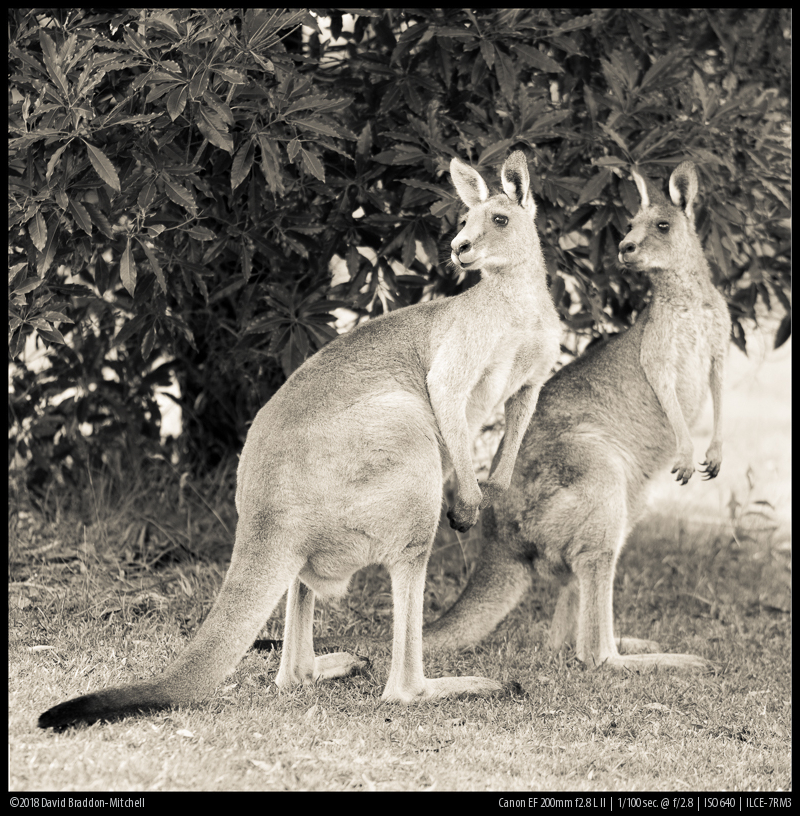
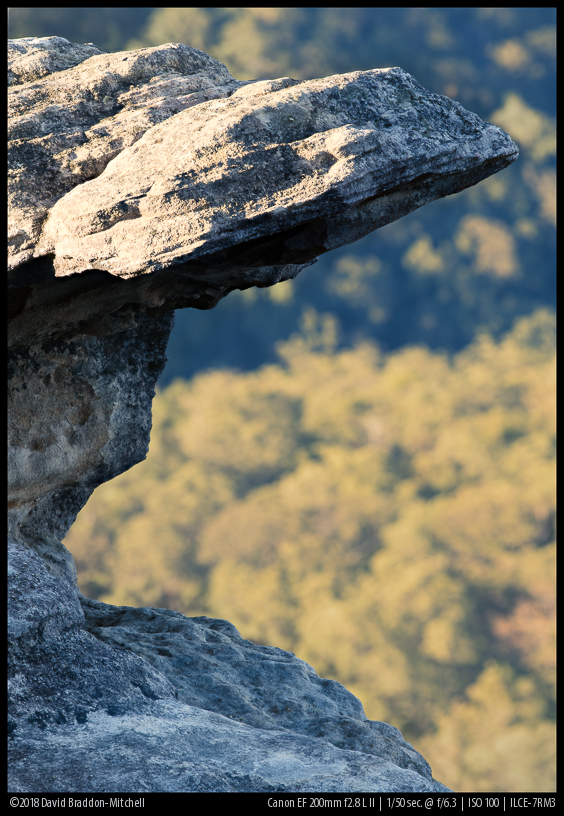
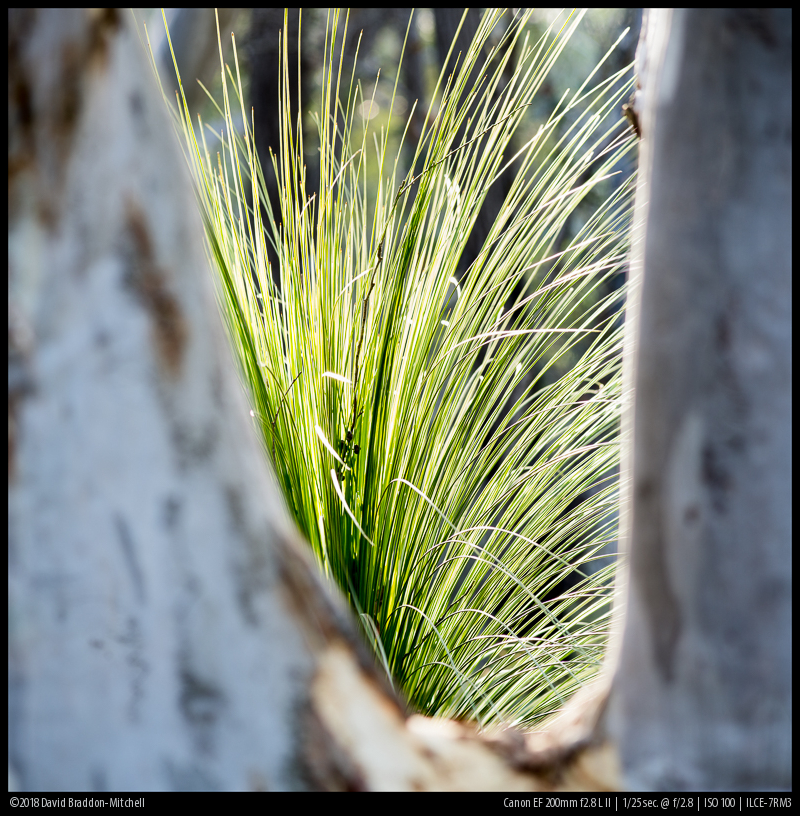
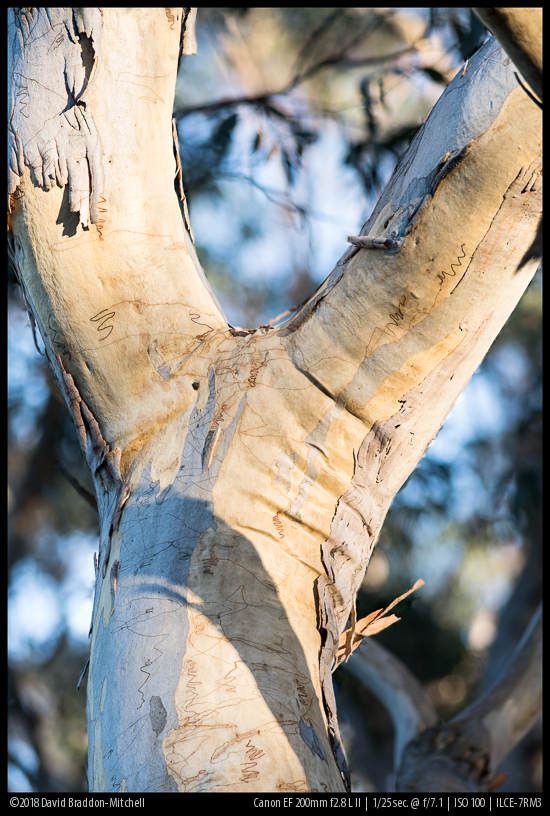
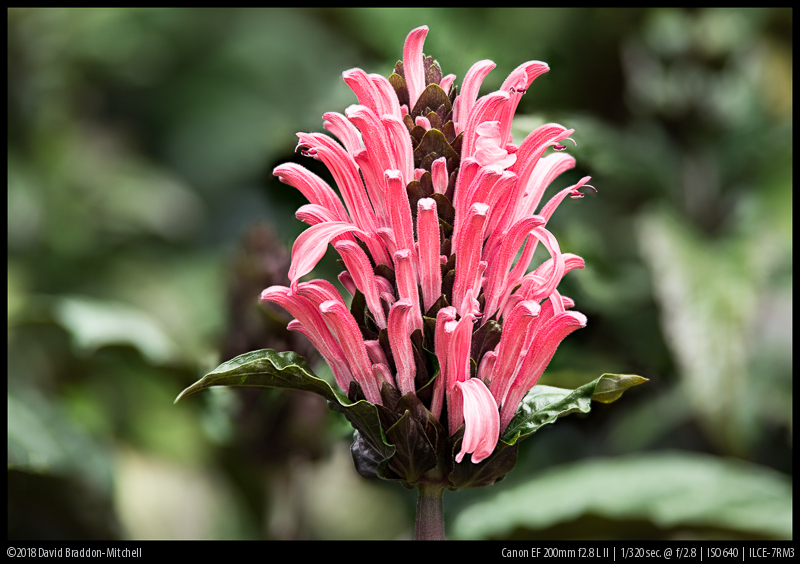
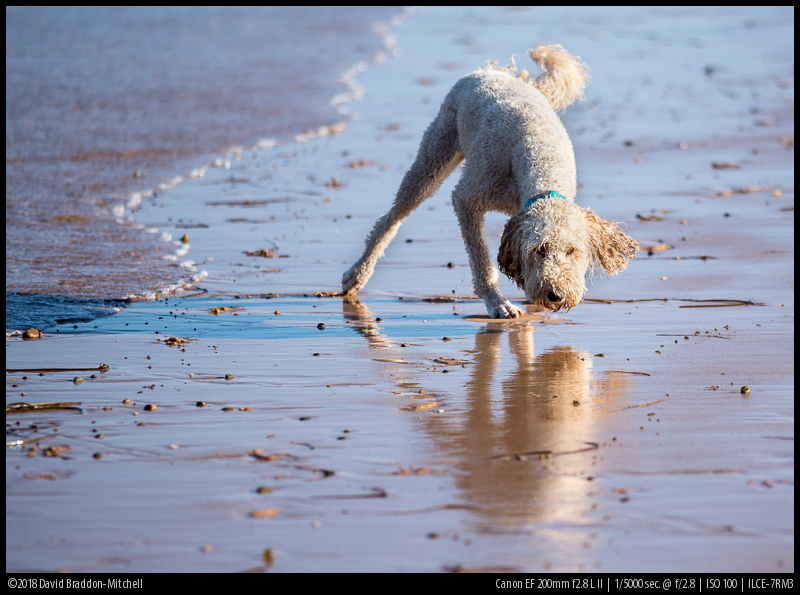
Most of the samples in this review are viewable in high resolution at my SmugMug site.
Related Articles
- Review of Sony G 4/70-200 by Phillip
- Overview: lens reviews
- An upgrader’s notes on the new Sony A7rIII Pt 1
This site contains affiliate links. If you make a purchase using any of the links marked as affiliate links, I may receive a small commission at no additional cost to you. This helps support the creation of future content.
David Braddon-Mitchell
Latest posts by David Braddon-Mitchell (see all)
- Laowa FFii 90mm F2.8 CA-Dreamer Macro 2x: getting close! - August 21, 2022
- FLM Ballheads: a rediscovery - February 4, 2021
- Laowa 14mm f4 Detailed Review - December 31, 2020







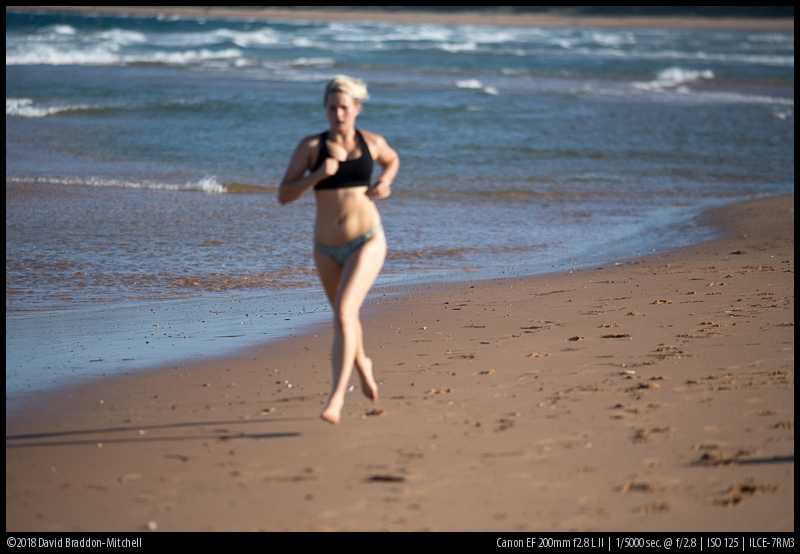
















Great review! I purchased this lens used for $500 about 6 months ago and use it on my Sony a7r2. I concur with everything David wrote. I have been delighted with the results and think that at $500 it’s a bargain. In fact, it was so good I then purchased the 135/2L which in my opinion is even better!
Yes I agree the 135/2 is a touch better. But there are no native AF 200 prime options at all.
FYI I use mine with the Sigma MC11 and AF is as reported. To be honest, switching to MF and using focus peaking and assist works so well
, I’m covered. Tracking fast moving objects (dogs) on the a7r2 is another story, with most lenses.
Absolutely.. no lens does fast forward tracking well on the r2 though otherwise the AF is good. But I tested this on R3, which does track well with native lenses.
I got the 135/2L and it works well with TC1401 on my A7iii/MC11, resulting in 189/2.8. I have not checked corner sharpness in any detail, but it is quite sharp in centre.
Thanks for the review. Good to know it performs this well.
Btw – the headers for the zoom comparisons are wrong: “Sony FE 2.8/70-200G”.
Thanks! Fixed!
You’re the first person I’ve seen who has the Canon 200/2.8 and some 70-200 lenses. Since going Sony I’ve yet to see anyone cover if any of these three lenses suffer from focus breathing when focused close. My guess is that the prime will do better than most 70-200 designs due to their complexity.
Possibly so, but I didn’t test for focus breathing. Informally, though, images at MFD had the magnification I would expect from a 200. Still, IF lenses are likely to do some focus breathing, even if not much.
Nice review, it’s interesting to hear how it can work on the A7rii/iii. Quite like the rendering of the Minolta AF 200 2,8 but you are right on all accounts – especially that screw drive AF and how AF is obviously how it’s meant to operate (it is fast, at any rate).
My experience with Canon lenses is limited to the EF 400 5,6 but it is certainly a sympathetic and ergonomic experience on a native camera. This not-so-often-talked-about EF 200 2,8 sounds as if it might be a nice companion to an A7rii/iii/A9/(A7iii).
Hi.Which l bracket are you using on your r3?
I’m using the Markins, which is very nicely made and I think the lightest. It doesn’t cover the battery cover, so if you want one that adds a bit of thickness there so as to give more grip you need an RRS, or an RRS copy, or the other Chinese design that is around under various names (but I don’t recommend that last one because the clamp area for vertical use is not very effective.
SUnwayphoto make a decent L bracket similar in form to the Marlins, nice but not as nice, considerably cheaper.
Thx,just ordered one.
I use this lens on a A7R (mk1) with the Viltrox mk4 adaptor and its brilliant, AF is fast and reliable and with auto iso and minimum shutter above 250 I can hand hold ok
Wow that surprises me, as the original A7r is CDAF only. Glad to hear it. I have an old Commlite (same adapter as Viltrox) and I didn’t even try it, thinking it wouldn’t work well (didn’t work with the 2/135)
I was surprised also, here is a shot I snapped of the local rescue chopper in flight, it was just leaving hover so not traveling very fast
https://imgur.com/YPeDGxD
Thanks for the great review, I have been eyeing this lens a lot!
Also, thanks specifically for doing size comparison *with* the adapter, which not many people (other than the writers on this site) do!
Thank’s Brian!
Yes it mystifies me that people often do size comparisons without the adapter. Of course sometimes people carry the lens without adapter; but they always use it with! And my sense is that most people when they take an adapted lens with them leave the adapter on…
Yup, the adaptor is always in my bag and jumping between the 135 and 200. Rob
Thank you for an excellent article! The canon is really beautiful, and what do you think about the manual Nikon AIS 2,8 / 180 ED?
I don’t know the Nikon lens personally, though the reputation is that it’s good but not as good. That seems plausible; it’s a much simpler construction (five elements only one ED) and I don’t see how it could be optimised for more than one distance.
And, of course, it can’t offer AF if that matters to you. Of course the MF experience will be a little bit nicer.
As always, an excellent, informative, entertaining and useful review.
The photos and your discourse with commentators added to the fun.
I wish B&H would do a package-deal on the MC-11 plus this lens… the Batis 135 took the mickey out of my finances, so even though the Canon 200/2.8 looks terrific, I’m a little reluctant to drop CAD 1500 (plus or minus) on the combination.
If you buy used, you should get the pair for USD 600 max….if you go with auctions and avoid buy it now.
Good review 🙂 the lens is really good. I have tried it a couple of times. It is very lightweight and delivers great results. If you do not need a zoom lens … this one is the greatest 70-200 alternative.
I wonder how the 70-200 4.0 L IS compares to the Sony FE 70-200 4.0G. I was very impressed by the Canon and very disappointed by the Sony when I tried them back in the days.
I did a comparison of the canon and Sony f4 IS zooms. The two copies I had were about similar at 70mm, the Sony much better at 135 and the Canon better at 200.
But both are quite variable from copy to copy, so this may not be how every two copies compare.
David great write up as always.
I already own a 135L and cropped it becomes a 200/2.8. So this lens maybe less usefull for me though cropped it will become a 300/4.
Great review – was wondering if the link has changed to the full photos on your smugmug page ? can’t seem to find it 🙁
Hoping to pick this up soon – Was wondering while the newer 70-200’s are supposedly slightly sharper – how the bokeh / rendering compares to the prime? falloff and rendetion seems superior to me on the 200 prime – but need to see an A/B with a model or subject etc….
look fwd to further testing – cant beat the performance / range for the weight + bonus non-attention grabbing black 🙂
David is currently on vacation, when he returns I am sure he will take care of it.
Thanks for a great article. On my a7rII I use ta minolta 200/2.8 (lea4) and a tamron usd g1 70-200/2.8 (canon version with mc11) with great results. Sure for sport tracking it s not the best but for everything else I have no complains. Also let s not forget they are both compatible with a 1.4x extender to get the 280mm reach or more in apsc mode. No af issue and loss of quality is not bad if you get a good one (kenko dgx for me which is fairly cheap).
I use this lens on my A7iii and the results are excellent and beyond expectations – very happy with this combo.
David,
thank you for this nice review! I was wondering if you have any idea of how this lens would compare with APO-Telyt and APO-Lanthar 180. I am specially interested in contrast and colors. Thanks in advance.
Jorge
So underrated and underused. I use the Canon 200mm 2.8 on my Sony A7riii and love it, but I never read of others using this combination. They don’t know what their missing!
Do you also use the mc11? Is there a better option in 2022 in terms of (eye) AF performance on the A7III?
Some lenses work better with the MC11, some with the latest Metabones.
Canon R7 user here. I heartily agree with this review. I bought an RF 100-400 f/5.6-8 IS last fall to experiment with taking pix of birds in flight. Got a few nice shots, but traded it in on an RF 70-200mm f/4L that was tested as sharper and let in 4x the light, allowing higher shutter speeds.
In the meantime, I became impressed with the image quality of a few inexpensive RF primes – 24 1.8, 35 1.8, and 85 2.0 and decided to look for a 200mm prime.
I saw this lens offered second-hand for a little over $500. Sure, it’s 27 years old and doesn’t have IS – hence the low price – but if the R7’s IBIS works for it, it’ll be ok.
It’s more than OK. I followed it up with an equally-old – and even better – EF 135 f/2L.
When I found tests showing that Canon’s 1.4x EF converter doesn’t impact the 200’s sharpness much, I snagged one – so I now have a 280 f/4 that’s faster and sharper than the RF 100-400 that started this steeplechase.
PS to RF shooters out there: If you’re having trouble autofocusing with older lenses like these, turn off the fully-electronic shutter. They focus fine if you use Electronic First Curtain shutter.
I have a Panasonic G9 with the Leica 200/2.8.
I’ve been thinking about swapping for the Canon 200/2.8, esp as I could also use the Canon lens on my R8 (and as a bonus, the Canon lens is also 660 grams lighter than the Leica, even adding in the weight of the EF to MFT smart adapter!) – but – wondering how much (if any) IQ I’d give up? Thanks…
I don’t think anyone here has any experience with that Leica 200mm 2.8 and that would be needed to give a qualified answer, sorry!